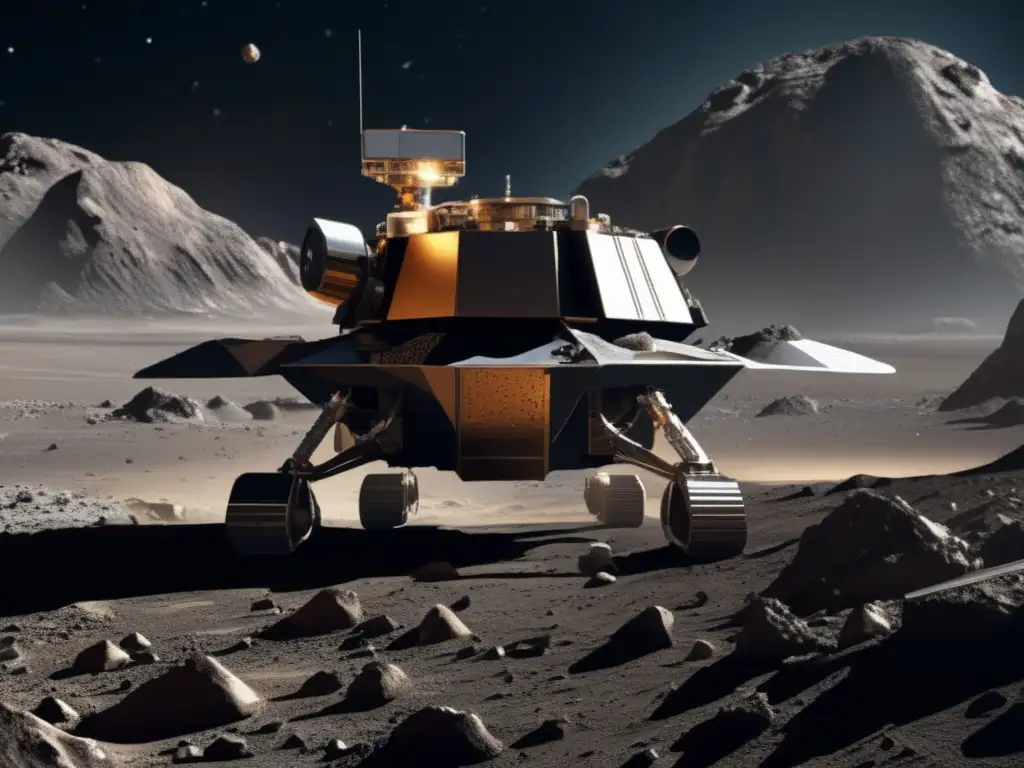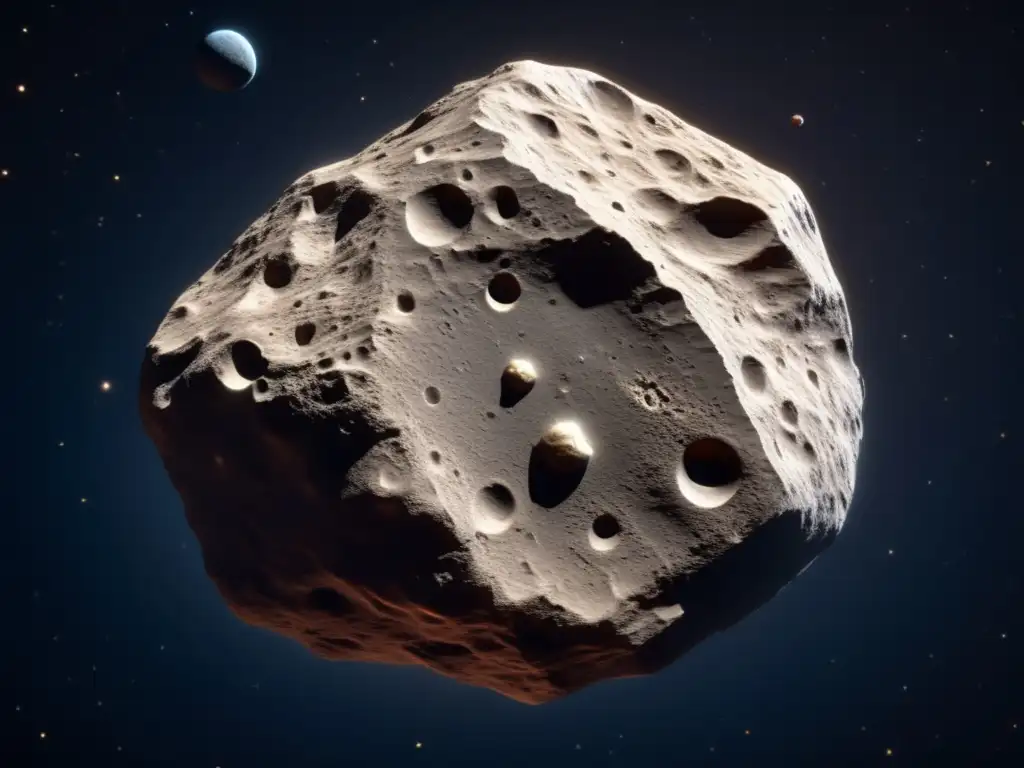Bringing Life To The Universe: The Role Of Asteroids

Introduction
Asteroids have been a focus of fascination for scientists and astronomers for many years. These celestial objects are remnants from the formation of our solar system, and numerous studies have shown that asteroids contain valuable information about the early history of our universe.
However, recent research has provided new insights into the role that asteroids may play in bringing life to the universe. Scientists are now suggesting that asteroids could have carried the building blocks of life to Earth and other planets, and they may even be responsible for the existence of extraterrestrial life.
The Building Blocks of Life

The Origins of Life
Scientists have long pondered the question of how life on Earth came to be. One popular theory suggests that life originated from organic molecules, which are the building blocks of life. Organic molecules such as amino acids, nucleotides, and sugars have been detected in meteorites, which are asteroids that have entered the Earth's atmosphere.
The discovery of these organic molecules in meteorites provides strong evidence that asteroids may have played a key role in the origins of life on Earth. It is believed that these organic molecules may have been brought to Earth by asteroids that collided with our planet billions of years ago.
The Panspermia Hypothesis
The panspermia hypothesis suggests that life on Earth may have originated from microorganisms that were brought to our planet by comets or asteroids. According to this theory, these microorganisms may have survived the harsh conditions of space and then seeded life on Earth when they arrived.
While this theory has been met with skepticism in the past, recent studies have provided new support for the panspermia hypothesis. Scientists have discovered a type of bacteria that is capable of surviving the extreme conditions of space, providing evidence that life could indeed survive a journey on an asteroid or comet.
The Search for Extraterrestrial Life
The discovery of organic molecules and the possibility of panspermia have led scientists to speculate about the existence of extraterrestrial life. While no definitive evidence of alien life has been found yet, many scientists believe that asteroids could hold the key to discovering life outside of Earth.
Asteroids are believed to be abundant throughout the universe, and they may contain the necessary ingredients for life as we know it. Water, for example, has been detected on several asteroids in our solar system, and water is considered to be an essential component for life.
The Future of Asteroid Exploration

The Importance of Asteroid Exploration
Asteroid exploration has become an increasingly important area of research in recent years. As scientists continue to uncover new information about the building blocks of life and the possibility of extraterrestrial life, the study of asteroids is becoming more crucial than ever before.
In addition to their potential role in the origins of life, asteroids also represent a valuable source of resources such as precious metals and water. Several companies have already begun to explore the commercial potential of asteroid mining, which could provide a new source of wealth and resources for humanity.
The Role of Technology
Advancements in technology have made it possible for scientists to study asteroids in greater detail than ever before. Robotic missions to asteroids have allowed scientists to collect samples and gather data about these celestial objects, providing new insights into their composition and history.
Future missions to asteroids will likely involve both robotic and human exploration. NASA has plans to send astronauts to explore an asteroid in the near future, which could provide an unprecedented opportunity to study these objects up close and gain a deeper understanding of their potential role in the origins of life.
Frequently Asked Questions

-
Could asteroid mining lead to the depletion of resources in space?
No. While asteroid mining could potentially lead to the depletion of resources on individual asteroids, there are believed to be millions of asteroids throughout the universe. It is unlikely that humanity will run out of resources in space anytime soon.
-
Are there any plans to send humans to an asteroid?
Yes. NASA has plans to send astronauts to explore an asteroid in the near future. This mission could provide valuable insights into the composition and history of asteroids, as well as their potential role in the origins of life.
-
Can asteroids support life?
While it is unlikely that asteroids can support complex life forms, some asteroids have been found to contain water and organic molecules, which are considered to be essential components for life as we know it.
-
Could we terraform asteroids to make them habitable?
While it may be possible to terraform asteroids in the future, it is currently not a practical or feasible option. Asteroids lack many of the necessary resources needed to support life, and they are subject to extreme conditions such as high radiation and low gravity.
-
How do we detect asteroids?
Asteroids can be detected using a variety of methods, including telescopes, radar, and space-based observatories. Scientists are constantly developing new techniques for detecting and tracking asteroids as they move through space.
Conclusion
Asteroids are fascinating objects that have captured the imagination of scientists and astronomers for many years. From their potential role in the origins of life to their commercial potential as sources of precious metals and water, the study of asteroids is becoming increasingly important in our quest to understand the universe around us.
As technology continues to advance, we will likely learn more about these celestial objects and the role they may play in bringing life to the universe. Whether through robotic or human exploration, the study of asteroids will undoubtedly continue to inspire wonder and awe for generations to come.
Additional Resources

- NASA Asteroid Mission
- The Search for Life on Asteroids and Comets
- Asteroids: Formation, Discovery and Exploration
 Cosmic Seedlings: Asteroids And The Spreading Of Life
Cosmic Seedlings: Asteroids And The Spreading Of Life Extraterrestrial Oasis: Could Life Thrive On Asteroids?
Extraterrestrial Oasis: Could Life Thrive On Asteroids? The Surprising Role Of Asteroids In The Emergence Of Life
The Surprising Role Of Asteroids In The Emergence Of LifeIf you want to discover more articles similar to Bringing Life To The Universe: The Role Of Asteroids, you can visit the Asteroids and Extraterrestrial Life category.
Leave a Reply

Articulos relacionados: